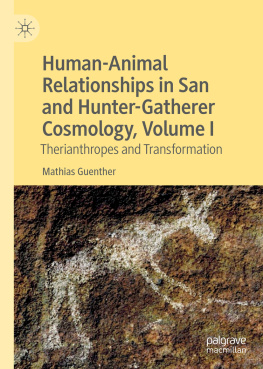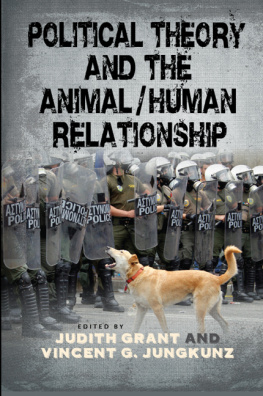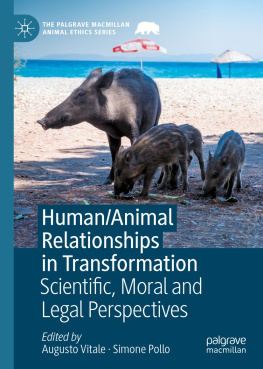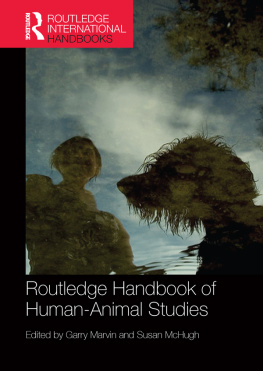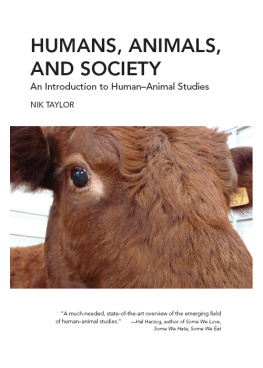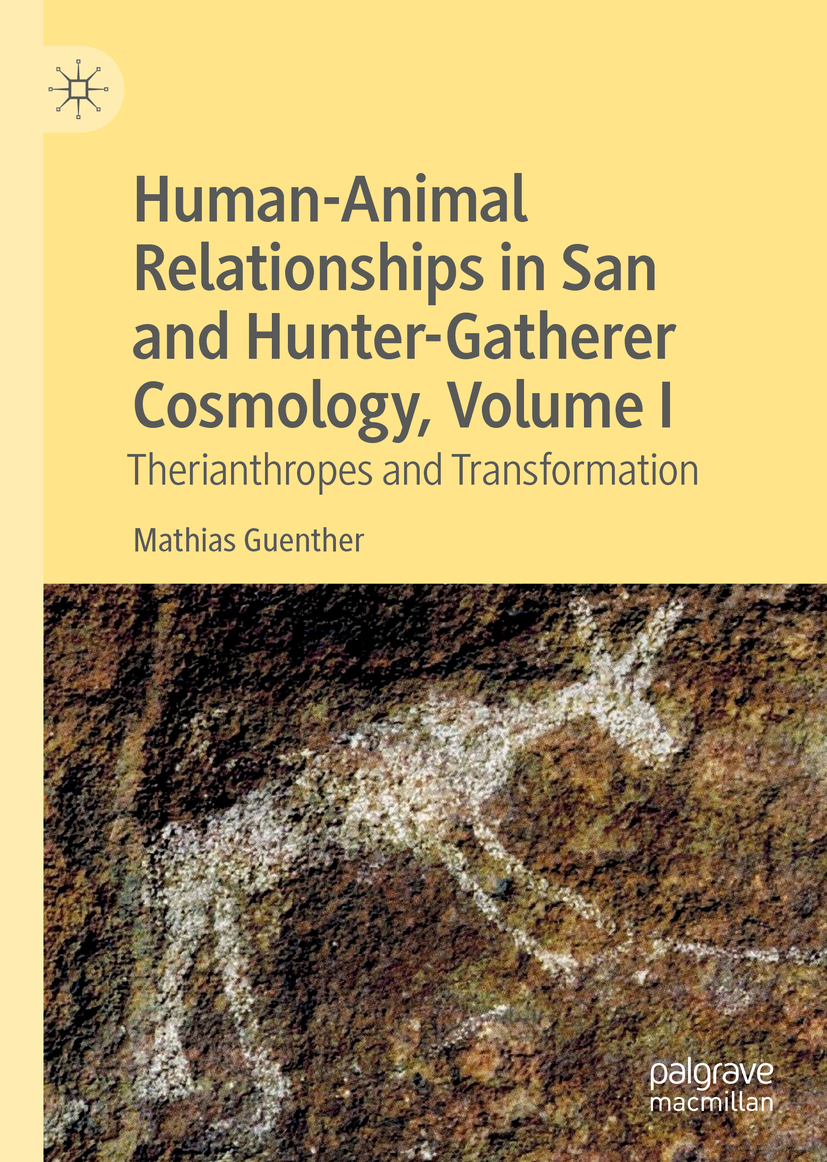Mathias Guenther
Department of Anthropology, Wilfrid Laurier University, Ontario, ON, Canada
ISBN 978-3-030-21181-3 e-ISBN 978-3-030-21182-0
https://doi.org/10.1007/978-3-030-21182-0
The Editor(s) (if applicable) and The Author(s), under exclusive licence to Springer Nature Switzerland AG 2020
This work is subject to copyright. All rights are solely and exclusively licensed by the Publisher, whether the whole or part of the material is concerned, specifically the rights of translation, reprinting, reuse of illustrations, recitation, broadcasting, reproduction on microfilms or in any other physical way, and transmission or information storage and retrieval, electronic adaptation, computer software, or by similar or dissimilar methodology now known or hereafter developed.
The use of general descriptive names, registered names, trademarks, service marks, etc. in this publication does not imply, even in the absence of a specific statement, that such names are exempt from the relevant protective laws and regulations and therefore free for general use.
The publisher, the authors and the editors are safe to assume that the advice and information in this book are believed to be true and accurate at the date of publication. Neither the publisher nor the authors or the editors give a warranty, express or implied, with respect to the material contained herein or for any errors or omissions that may have been made. The publisher remains neutral with regard to jurisdictional claims in published maps and institutional affiliations.
Cover illustration: Woodhouse Collection/Special Collections/University of Pretoria
This Palgrave Macmillan imprint is published by the registered company Springer Nature Switzerland AG
The registered company address is: Gewerbestrasse 11, 6330 Cham, Switzerland
Preface
Thisbookis written to fill two gaps in anthropology, in two of the disciplines research fields, the one in hunter-gatherer studies, specifically its subfield of Bushman studies, the other in the more recent field of what some refer to as The Anthropology of Ontology (Scott 2013) and others have dubbed the New Animism (Harvey 2006: xi)as opposed to its Old, evolutionary rather than relational, predecessor,paceTylor. These two fields at present exclude each other, in terms of ethnographic substance and theoretical discourse, to the detriment of both. This book sets out to bring the relational ontology paradigm to San studies, andvice versa, to the respective research fields benefit.
This goal is all the more apposite in that hunter-gatherer studies and relational ontology have been linked from the start, back in the 1990s. This is when the ontological turn, which has since then been taken in socio-cultural anthropology generally and is part of an even widerposthumanistturn across Western thinking generally, was first taken in Amazonian studies, among such hunting people as the Achuar, Arawet and Avila Runa, by Philippe Descola, Eduardo Vivieros de Castro and Eduardo Kohn, the three leading voices in Amazonian studies (Costa and Fausto 2010). Through the influence of another leading voice, Tim Ingold, studies of relational ontology were undertaken at around the same time in the Subarctic, from northern Scandinavia, through Siberia (Brightman et al. 2012; Halbmayer 2012) to North America, where ethnologists such as Adrian Tanner, Harvey Feit, Robin Ridington, Colin Scott and Robert Brightman had worked on relational and cosmological aspects of hunter-prey relations even before the 1990s. The influence is evident in these ethnographies of another Subarctic researchers, Irven Hallowell, who a generation before, in an essay on Ojibwa ontology that has since become a foundational article in relational ontology, conceptualized the non-human person (or other-than-human person), thereby widening the field of social relationsand the concept of both society and of culturebeyond humankind (1960). A similar recasting of animism as relational epistemology, that acknowledged Hallowells influence, was the theme 20 years ago of a then seminal and now classicCurrent Anthropologyarticle by Nurit Bird-David (1999: S71), which situated relational ontology among a number of hunter-gatherer-horticulturalists in southern Asia.
Yet, the ontological turn, for all of its paradigm-shifting effects on the study of hunter-gatherers during the last and first decades of the previous and present centuries, all but by-passed the Kalahari, amongst whose hunting-gathering people ethnographers were wont to examine the human-animal relationship not in social, cosmological, mystical fashion but instrumentally and strategically, as a meat-on-the-hoof resource, cherishedmore so than plantfor its high caloric yield and thus a key concern of the foraging mode of production and itsmodus operandi, optimal foraging strategy. This cultural-ecological, theoretical-materialist bent in San studies was especially marked and engrained in San studies, with the San, ever since the path-breaking Man the Hunter conference in 1966 (and conference volume with the same title edited by the two conference organizers published two years later), and as a result of a large number of high-quality ethnographic writings on the San. The effect of all of this was to render this foraging group one of the two (alongside the Ach) textbook case of the optimal forager, whose immediate-return subsistence economy was seen to afford people affluent lifeways. When Amazonian and Subarctic hunting became considered in social-relational and cosmological terms rather than instrumental-alimentary ones, in the 1990s, the materialist paradigm continued to inform research in San studies (albeit, not exclusively so, especially through the Revisionism Debate this field generated, in terms of political economy and World Systems theory, both paradigms the discursive links of which to relational ontology are no closer than they are to optimal foraging).
I set out in this book to show that San worldview and lifeways are in fact also, at the ontological level, the way people conceive of, perceive and experience their interaction with animals, along with other beings of their (preter)natural world, pervaded with relationality and intersubjectivity (and have done so in the past, on the basis of ethnohistorical and archaeological evidence largely on southern San that will be marshalled). In filling this gap in our understanding of San ethnography and culture I will also fill the gap in ontological anthropology, which has excluded these southern hunting people from its neo-animistic purview. Apart from adding new insights to the relational ontology perspective in anthropology, this study, of San-imism, also underscores the important insight that animism is not some monolithic schema or cosmologico-religious complex but something diverse and multiplex, structurally varied, ecologically and historically contingent. Indeed, as I will also argue, one such included in many and varied animisms of people and cultures of this world areWesterners.
I have recently dealt with these issues in two exploratory articles on relational ontology in the context of San cosmology and lifeways, namely Therefore Their Parts Resemble Humans, for They Feel That They Are People: Ontological Flux in San Myth, Cosmology and Belief (in

